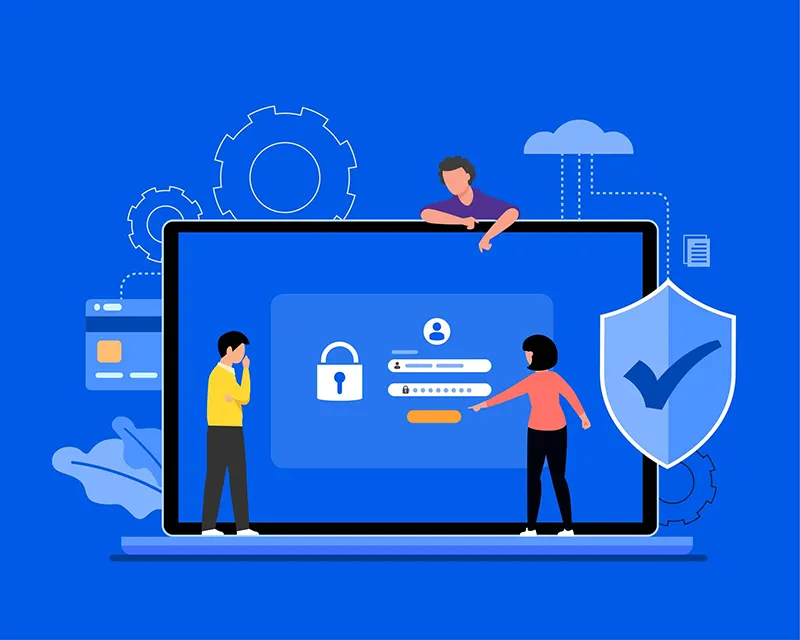5 Ways a Cloud PBX System Benefits Remote Work
A lot of people believe that it was the Covid Pandemic that led to the rise of Work from Home. That, however, is further from the truth. In fact, remote and work-from-home jobs have grown by 173% from 2005 to 2018.
So it is safe to say that the Pandemic is not completely responsible for this shift in work culture.
Working remotely is a change that is here to stay. People have the option to work from their homes now. They can even opt for a workcation and work from their preferred holiday destinations.
This change is beneficial for both the employees and employers. However, to maximize these benefits, one needs a robust and feature-rich communication system.
Before we learn about what system can maximize the benefits of Remote Work, let's take a sneak peek at all the benefits of it for employers!
7 Ways Remote Work Benefits Employers
It is a known fact that Remote Work benefits employees tremendously. However, the benefits that an employer enjoys due to remote work fly under the radar.
Let's check all the ways remote work is beneficial to employers!
Improved Productivity and Performance
There are multiple studies conducted over the past two years about how remote work affects productivity and performance.
When these studies began people thought remote work would lead to a decline in productivity and performance.

However, while there was a dip initially, once employees adjusted to the remote work environment their productivity and performance increased drastically.
Different studies have come to different conclusions in terms of how much productivity and performance increase in a remote work environment. The results range from anywhere between 50-70% for productivity and 15-30% in terms of performance.
Overall, having a more productive workforce is a win for any employer.
Cost Savings
Running an office involves a lot of costs. There are fixed costs such as the rent and upkeep which can be high. Then there are the utility costs that will fluctuate according to the season but still add to your expenses.
There are other costs that a lot of people forget about. If we consider how much time is wasted in the “water cooler talks” or “smoke breaks”, it adds up and a lot of productivity is lost.

Commuting to the office can also lower productivity. No one likes to be stuck in traffic, commuting tires one out and can thus lower an employee’s productivity.
Remote work eliminates most of these costs completely. If reports are to be believed, an employer saves $11,000 on average, annually, for every employee working from home.
Higher Employee Retention Rate
A lot of young employees found their first employment amidst a pandemic. The only work culture they have known so far is remote working.
Moreover, a lot of older employees also took a serious liking to the remote work environment. Considering the other added benefits of working from home, it raised the quality of life significantly.

The situation now is so that people don’t wish to go back and work from offices. A lot of employers tried to force employees back into offices only to face a severe backlash in the form of mass resignations.
Offering the opportunity to let employees choose to work from home is a requirement now. Employers offering this opportunity have experienced a higher employee retention rate compared to those who don't.
Bigger Talent Pool
A work-from-office environment requires you to hire people from your local talent pool. If your firm is in the growth phase, chances are you won’t find everyone you need in your local talent pool.
Remote work opens up your organization to a wider global talent pool. This makes it easy to find people who’re a perfect fit for your requirements.

Moreover, chances are you might be able to hire someone remotely for significantly lower costs than hiring locally.
Global Market Insights
Relying on news and reports to know what is happening around the world is not a reliable option. A lot of the insights you may require can be filtered out.
When you have a global workforce working remotely, you have access to all the insights they can provide you about their local market.

Moreover, the information they provide comes from the actual ground zero and is unfiltered. This can help your firm tremendously in case you have global operations.
A Healthier and Happier Workforce
Remote Work allows employees to work from the comfort of their homes. Moreover, as they don’t have to commute, they have higher energy levels and are not exposed to pollution.
No commute equates to more free time for them. They can have a better work-life balance and dedicate time to their families and fitness.

As a result, you have a workforce that is not only happy but healthy. This translates to fewer sick leaves and higher levels of performance from employees.
A Sustainable Business
Sadly a lot of businesses undermine sustainability. It is known for a fact that businesses have always prioritized profits over sustainability. Remote work offers an opportunity to raise profits while becoming more sustainable ventures.
How exactly?
Office spaces have a carbon footprint of about 830 million metric tonnes of CO2. Add in the carbon footprint of their power sources and the figure swells further. Remote work eliminates the need for offices at scale.

Lower requirement for office spaces means there won't be many large offices built. This equates to more space for housing and public spaces.
Thus, eliminating the need for offices at such a high scale reduces the carbon footprints of any business significantly.
With that, we have covered the top ways in which remote work benefits employers. We can now take a look at how a Cloud PBX benefits remote work.
Understanding the Benefits of a Cloud PBX for Remote Work
Communication is the most crucial aspect of any work environment. Remote working has further increased the importance of communication.
Let us see how having a Cloud PBX benefits Remote Work!
Seamless Communication
Most small to medium businesses still have their employees use their personal phones to communicate with clients and internally. While they are compensated for the same, the communication is not seamless.
An employee may have to use several apps for each form of communication. One for video calls, one for VoIP voice, one for instant messaging and so on.

Opting for a cloud PBX eliminates this issue. With A cloud PBX, you have all your communication in one place.
No matter where your employees are situated, with a cloud PBX, they’ll be able to communicate internally and externally in any form they need to.
Offers More Versatility
Many communication platforms serve businesses. However, they mostly specialize in one form of communication. The same isn't the case with a Cloud PBX.
A Cloud PBX is capable of handling any form of communication possible over the Internet Protocol. This versatility offered by a Cloud PBX is not available in any off-the-shelf communication platform.

Voice calls, video calls, conference calls, video conferences, instant messaging and other forms of communication are all possible using a Cloud PBX.
Moreover, all these capabilities extend not just internally but externally as well. Thus, communication inside the firm and with clients becomes more effective.
Promotes Socialization within the Organization
While remote work is amazing and benefits every party in multiple ways, there is a downside to it. Remote employees are unable to get a healthy amount of socialization.
A work-from-office environment too does not guarantee healthy levels of socialization. As humans, we need a good amount of socialization to be mentally and emotionally healthy.

A Cloud PBX enables remote employees to seamlessly connect with one another in any form or way they desire. Having this ability ensures everyone can comfortably connect and socialize with their team members.
The fact that VoIP communication is very affordable makes this a good bet for the employer as well.
A Slew of Useful Features
Any off-the-shelf communication platform is limited in terms of features. A cloud PBX on the other hand offers a lot of useful features. Let us take a look at those.
Intelligent Routing - A Cloud PBX can connect customers with the right engineer or executive effectively. It checks the availability of the support executives before routing calls to their endpoint.
Voicemail - There are times when a customer or client needs to reach someone in particular but they’re either busy or unavailable. In this case, the voicemail facility allows the client or customer to leave a message for the person they need assistance.

IVR - The Interactive Voice Response feature allows you to set up an interactive menu that the customers can navigate through. You can offer troubleshooting guides or direct them to the best problem solver using an IVR.
Call Queuing - All incoming calls can be queued intelligently and prioritized as per their urgency. There are also other ways of queuing calls and it allows for more control over the flow of call traffic through your system.
These were among the top most beneficial features that a Cloud PBX offers. Depending upon the service provider you may even be offered more features.
Secure and Always Available
Yes, off-the-shelf communication platforms are secure but you don’t have any control over the level of security. With a Cloud PBX, you have complete control over the security of your internal and external communication.
You have control over the network and media transfer protocols. You may choose to heavily encrypt some lines of communication while leaving the others safe.

Another benefit is that a Cloud PBX is always available. As it runs on the cloud, it is not affected by any local changes or hardware failures.
ConnexCS’s Cloud PBX even offers Anycast, which means regardless of where your employees are, they will always have complete communication capabilities.
Final Word
Remote work is a shift in the work culture that is turning into an industry norm. The benefits of remote work are well known for the employees but we even highlighted the benefits for employers in this article.
Communication sits at the core of any remote work environment. It is safe to say that getting the best communication solution for remote working needs is imperative.
The perfect solution for these requirements is a Cloud PBX. With all its benefits highlighted clearly, we hope you now know why you should get one for your remote workforce.
























































































































